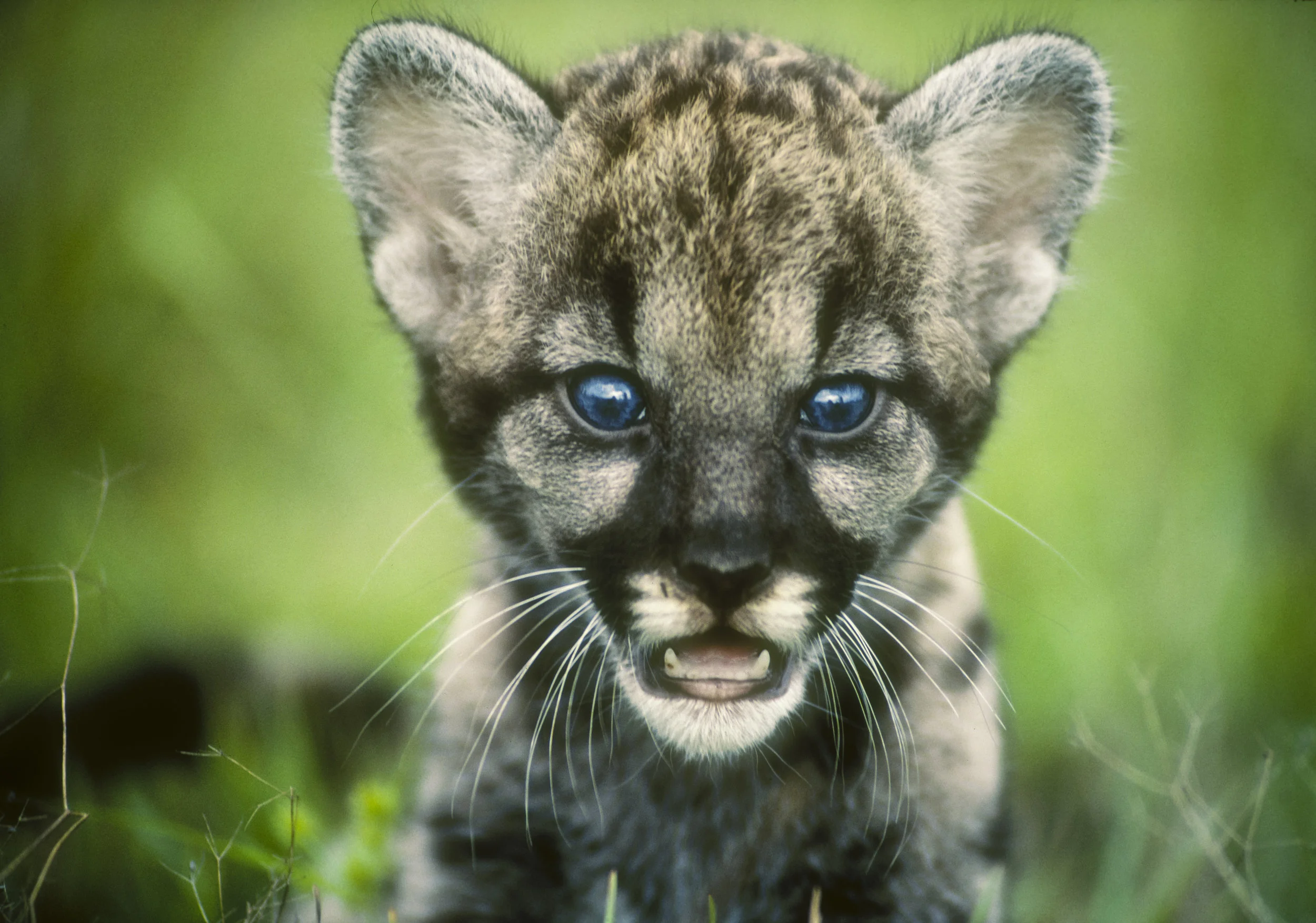Florida Panther
"Morning Dew" by Aaron Blaise (digital)
“I grew up in the everglades and I feel a special bond with the Florida Panther. We had one who’s territory overlapped our property when I was a kid. I would often track it for hundreds of yards through the palm fronds and underbrush. Every now and then I’d see the tracks kick up sand then I’d follow them to a set of deer tracks also kicking up sand. I was always amazed at the stories I could read just following those tracks.”
Your purchase is helping Expedition Art and Saving Species purchase land in Sumatra! Learn more about the project.
Habitat
Florida panthers prefer warm climates and historically inhabited wetlands, swamps, upland forests and stands of saw palmetto throughout Florida and Louisiana, extending into other Gulf Coast states and Arkansas. The range of the Florida panther has since been catastrophically decreased and a small population is now restricted to the southwestern tip of Florida. Individuals can be found in areas such as the Everglades National Park and the Big Cypress National Preserve.
Family Life
Solitary and territorial animals, panthers are nocturnal and crepuscular, active primarily during the night and at dusk and dawn. They are largely reclusive and rarely caught sight of, mostly due to the fact that they live in remote and underdeveloped areas. Males roam larger areas than females; they come together to mate in the fall and winter and offspring are generally born every two years. Young will stay with their mothers for a year and a half before setting off on their own.
Lifespan
Florida panthers usually live from 10-15 years in the wild, though they can live to be 20 years old.
Hunting Habits/Diet
Florida panthers are carnivores. They primarily eat white-tailed deer, though they eat a variety of other smaller animals including wild hogs, raccoons, armadillos, birds and rabbits. Panthers are opportunistic predators and will not forgo the opportunity to catch and kill unsecured livestock and pets. Panthers select their habitat based on the abundance of prey available.
Population
An estimated 120-230 adult Florida panthers are alive today. While this indicates a positive trend in their population size, they are still considered Endangered.
Fun Fact
Panthers are known by a variety of names including mountain lion, fire cat, catamount, cougar, painter, and puma. They cannot roar; they can only purr. Florida panthers have cowlicks in the middle of their backs.
Why are they Endangered?
The Florida panther is affected by the local human population, primarily due to habitat fragmentation and encroachment. Urbanization and development, as well as road construction are potentially detrimental to the existing population. There is a high incidence of disease, especially due to the lack of genetic diversity in the remaining individuals.
Status
Endangered


